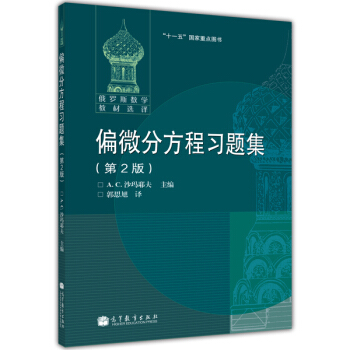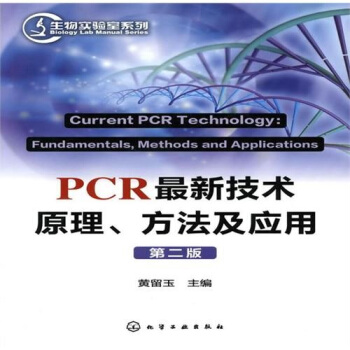![数理统计(第2版)(英文版) [Mathematical Statistics(Second Edition)]](https://pic.tinynews.org/10104512/bafe228e-66b0-49b2-adea-579a4f367101.jpg)

具体描述
内容简介
Probability Theory、Probability Spaces and Random Elements、σ-fields and measures、Measurable functions and distributions、Integration and Differentiation、Integration、Radon.Nikodym derivative、Distributions and Their Characteristics、Distributions and probability densities、Moments and moment inequalities、Moment generating and characteristic functions、onditional Expectations、Conditional expectations、Independence、Conditional distributions、Markov chains and martingales、Asymptotic Theory、Convergence modes and stochastic orders等等。内页插图
目录
Preface to the First EditionPreface to the Second Edition
Chapter 1.Probability Theory
1.1 Probability Spaces and Random Elements
1.1.1σ-fields and measures
1.1.2 Measurable functions and distributions
1.2 Integration and Differentiation
1.2.1 Integration
1.2.2 Radon.Nikodym derivative
1.3 Distributions and Their Characteristics
1.3.1 Distributions and probability densities
1.3.2 Moments and moment inequalities
1.3.3 Moment generating and characteristic functions
1.4 Conditional Expectations
1.4.1 Conditional expectations
1.4.2 Independence
1.4.3 Conditional distributions
1.4.4 Markov chains and martingales
1.5 Asymptotic Theory
1.5.1 Convergence modes and stochastic orders
1.5.2 Weak convergence
1.5.3 Convergence of transformations
1.5.4 The law of large numbers
1.5.5 The central limit theorem
1.5.6 Edgeworth and Cornish-Fisher expansions
1.6 Exercises
Chapter 2. Fundamentals of Statistics
2.1 Populations,Samples,and Models
2.1.1 Populations and samples
2.1.2 Parametric and nonparametric models
2.1.3 Exponential and location.scale families
2.2 Statistics.Sufficiency,and Completeness
2.2.1 Statistics and their distributions
2.2.2 Sufficiency and minimal sufficiency
2.2.3 Complete statistics
2.3 Statistical Decision Theory
2.3.1 Decision rules,lOSS functions,and risks
2.3.2 Admissibility and optimality
2.4 Statistical Inference
2.4.1 P0il)t estimators
2.4.2 Hypothesis tests
2.4.3 Confidence sets
2.5 Asymptotic Criteria and Inference
2.5.1 Consistency
2.5.2 Asymptotic bias,variance,and mse
2.5.3 Asymptotic inference
2.6 Exercises
Chapter 3.Unbiased Estimation
3.1 The UMVUE
3.1.1 Sufficient and complete statistics
3.1.2 A necessary and.sufficient condition
3.1.3 Information inequality
3.1.4 Asymptotic properties of UMVUEs
3.2 U-Statistics
3.2.1 Some examples
3.2.2 Variances of U-statistics
3.2.3 The projection method
3.3 The LSE in Linear Models
3.3.1 The LSE and estimability
3.3.2 The UMVUE and BLUE
3.3.3 R0bustness of LSEs
3.3.4 Asymptotic properties of LSEs
3.4 Unbiased Estimators in Survey Problems
3.4.1 UMVUEs of population totals
3.4.2 Horvitz-Thompson estimators
3.5 Asymptotically Unbiased Estimators
3.5.1 Functions of unbiased estimators
3.5.2 The method ofmoments
3.5.3 V-statistics
3.5.4 The weighted LSE
3.6 Exercises
Chapter 4.Estimation in Parametric Models
4.1 Bayes Decisions and Estimators
4.1.1 Bayes actions
4.1.2 Empirical and hierarchical Bayes methods
4.1.3 Bayes rules and estimators
4.1.4 Markov chain Mollte Carlo
4.2 Invariance......
4.2.1 One-parameter location families
4.2.2 One-parameter seale families
4.2.3 General location-scale families
4.3 Minimaxity and Admissibility
4.3.1 Estimators with constant risks
4.3.2 Results in one-parameter exponential families
4.3.3 Simultaneous estimation and shrinkage estimators
4.4 The Method of Maximum Likelihood
4.4.1 The likelihood function and MLEs
4.4.2 MLEs in generalized linear models
4.4.3 Quasi-likelihoods and conditional likelihoods
4.5 Asymptotically Efficient Estimation
4.5.1 Asymptotic optimality
4.5.2 Asymptotic efficiency of MLEs and RLEs
4.5.3 Other asymptotically efficient estimators
4.6 Exercises
Chapter 5.Estimation in Nonparametric Models
5.1 Distribution Estimators
5.1.1 Empirical C.d.f.s in i.i.d.cases
5.1.2 Empirical likelihoods
5.1.3 Density estimation
5.1.4 Semi-parametric methods
5.2 Statistical Functionals
5.2.1 Differentiability and asymptotic normality
5.2.2 L-.M-.and R-estimators and rank statistics
5.3 Linear Functions of Order Statistics
5.3.1 Sample quantiles
5.3.2 R0bustness and efficiency
5.3.3 L-estimators in linear models
5.4 Generalized Estimating Equations
5.4.1 The GEE method and its relationship with others
5.4.2 Consistency of GEE estimators
5.4.3 Asymptotic normality of GEE estimators
5.5 Variance Estimation
5.5.1 The substitution.method
5.5.2 The jackknife
5.5.3 The bootstrap
5.6 Exercises
Chapter 6.Hypothesis Tests
6.1 UMP Tests
6.1.1 The Neyman-Pearson lemma
6.1.2 Monotone likelihood ratio
6.1.3 UMP tests for two-sided hypotheses
6.2 UMP Unbiased Tests
6.2.1 Unbiasedness,similarity,and Neyman structure
6.2.2 UMPU tests in exponential families
6.2.3 UMPU tests in normal families
……
Chapter 7 Confidence Sets
References
List of Notation
List of Abbreviations
Index of Definitions,Main Results,and Examples
Author Index
Subject Index
前言/序言
This book is intended for a course entitled Mathematical Statistics offered at the Department of Statistics,University of Wisconsin.Madison.This course,taught in a mathematically rigorous fashion,covers essential materials in statistical theory that a first or second year graduate student typicallY needs to learn as preparation for work on a Ph.D.degree in statistics.The course is designed for two 15-week semesters.with three lecture hours and two discussion hours in each week. Students in this course are assumed to have a good knowledge of advanced calgulus.A course in real analy.sis or measure theory prior to this course is often recommended.Chapter 1 provides a quick overview of important concepts and results in measure-theoretic probability theory that are used as tools in mathematical statistics.Chapter 2 introduces some fundamental concepts in statistics,including statistical models.the principle of SUfIlciency in data reduction,and two statistical approaches adopted throughout the book: statistical decision theory and statistical inference.Each of Chapters 3 through 7 provides a detailed study of an important topic in statistical decision theory and inference:Chapter 3 introduces the theory of unbiased estimation;Chapter 4 studies theory and methods in point estimation ander parametric models;Chapter 5 covers point estimation in nonparametric settings;Chapter 6 focuses on hypothesis testing;and Chapter 7 discusses interval estimation and confidence sets.The classical frequentist approach is adopted in this book.although the Bayesian approach is also introduced (§2.3.2,§4.1,§6.4.4,and§7.1.3).Asymptotic(1arge sample)theory,a crucial part of statistical inference,is studied throughout the book,rather than in a separate chapter.
About 85%of the book covers classical results in statistical theory that are typically found in textbooks of a similar level.These materials are in the Statistics Department’S Ph.D.qualifying examination syllabus.
用户评价
说实话,我拿到这本《数理统计(第2版)(英文版)》的时候,心里是有点打鼓的,毕竟“数理统计”这几个字听起来就带点“数学”的压迫感,而且还是英文版的,担心会看不懂。但实际翻阅下来,我发现我的担心是多余的。这本书的优点在于它的“循序渐进”。它不会一上来就抛出让你头晕的公式,而是从最基础的概念讲起,一步一步地引导读者进入数理统计的殿堂。对于一些容易混淆的概念,比如参数估计和置信区间的区别,它会通过非常清晰的对比和例子来阐述,让你豁然开朗。我尤其喜欢书中的图表,很多抽象的概念通过图形化的方式呈现出来,直观易懂,极大地降低了理解门槛。虽然我之前对统计学了解不多,但这本教材让我觉得统计学并不像我想象的那么枯燥和高深。它更像是一种解决问题的逻辑思维方式,教你如何从数据中提取有用的信息,如何做出理性的判断。我最开始只是想了解一下统计学大概是什么样子,没想到被这本书深深吸引,甚至开始主动去研究里面的内容,这完全出乎我的意料。
评分我是在准备一项重要的学术研究时接触到这本《数理统计(第2版)(英文版)》的。当时需要深入理解一些复杂的统计模型,而市面上中文的教材往往在理论深度和严谨性上略显不足,所以我大胆选择了英文原版。这本书带给我的惊喜是多方面的。首先,它的理论体系非常完整,从概率论基础到各种参数估计、假设检验,再到一些进阶的多元统计分析方法,几乎涵盖了数理统计的绝大部分重要内容。作者在讲解时,特别注重数学推导的严谨性,每一个公式、每一个定理的出现都有其深刻的数学根源,这对于我这种追求理论深度的人来说,简直是如获至宝。我特别欣赏它对一些看似抽象的概念,例如似然函数、充分统计量等,给出的直观解释和清晰的数学定义,让我能够真正理解其内涵。书中还引用了大量的实际案例,这些案例的选取非常有代表性,能够帮助读者将书本上的理论知识与现实世界中的问题联系起来,从而更好地应用所学知识。虽然阅读英文原版需要一定的语言基础,但这本教材的英文表达非常专业且易于理解,专业术语的翻译也很到位,完全没有影响我的阅读体验。
评分这本《数理统计(第2版)(英文版)》对我来说,简直是一本“工具书”式的教材。我不是一个喜欢死记硬背理论的人,我更看重的是如何将知识应用到实际解决问题中。这本书在这方面做得非常出色。它不仅仅是讲解理论,更重要的是教会你如何运用这些理论去分析数据,去解决实际问题。书中提供了大量的实际应用场景,比如如何进行市场调研的统计分析,如何评估产品质量,如何进行医学研究中的假设检验等等。这些案例生动形象,让我能够清晰地看到数理统计在各个领域的强大威力。而且,它在介绍每一种统计方法时,都会给出详细的步骤和注意事项,这对于我这种需要快速上手解决问题的人来说,非常实用。我经常会翻阅书中的相关章节,查找我需要的统计方法,然后按照书中的步骤进行操作,几乎每一次都能顺利地解决我遇到的问题。英文版的表达方式也让我在学习专业知识的同时,提升了自己的专业英文阅读能力,这对我未来的学术和职业发展都非常有帮助。
评分这本《数理统计(第2版)(英文版)》我算是用了挺长时间了,可以说是陪伴我度过了一段艰难的学习时光。当初选择它,很大一部分原因是它的英文原版名头,总觉得原汁原味的东西更地道。拿到书,第一感觉就是厚实,纸张质量不错,印刷也清晰,看着就让人有认真钻研的欲望。我尤其喜欢它对一些基础概念的解释,虽然是英文,但用词精准,逻辑清晰,不像有些翻译过来的书,读起来总觉得别扭。书中的例题设计得非常巧妙,很多都是经典的统计学问题,通过这些例题,我不仅理解了理论,还学会了如何将理论应用于实际。尤其是对于一些高阶的统计方法,书中给出了详细的推导过程,虽然有时推导起来颇费一番力气,但每一步都清晰明了,让我这个初学者也能逐步跟上。而且,这本书的习题也非常丰富,涵盖了从简单到复杂的各种类型,做完这些习题,感觉对书中的知识点掌握得扎实多了。虽然我不是统计学专业科班出身,但凭借这本书,我硬是啃下了不少硬骨头,对于我日后做数据分析工作打下了坚实的基础。总的来说,这本书的价值远超书本本身的价格,是一本值得反复研读的经典教材。
评分我一直认为,一本好的教材,不仅仅是知识的传授,更是一种思维方式的启迪。《数理统计(第2版)(英文版)》恰恰就是这样一本教材。它在讲解数理统计的理论时,并没有将数学推导作为最终目的,而是将严谨的数学框架作为工具,去理解和分析现实世界中的不确定性。书中对许多统计学核心思想的阐释,比如“无偏性”、“有效性”、“一致性”等等,都让我对统计学的本质有了更深刻的认识。它不仅仅是教会我“怎么做”,更重要的是让我理解“为什么这么做”。例如,在讲解最大似然估计时,它不仅仅给出了公式,更深入地探讨了这种估计方法的思想来源和优越性,让我对这种方法有了“知其然,更知其所以然”的理解。这种对理论背后逻辑和思想的深度挖掘,是很多教材所欠缺的。这本书让我感觉,数理统计不再是冷冰冰的公式堆砌,而是一种充满智慧的学科,它能够帮助我们更清晰地认识世界,更理性地做出决策。
评分这本书第一二章可作为测度论知识的复习素材。
评分很好
评分大师作品,慢慢拜读。
评分很好,纸也比较细腻!
评分很难的一本教材来着,慢慢啃吧
评分我上学期的《高等统计学》就是用这本书作为教材!这是它的习题配套书。
评分做活动时候买的,很不错
评分读了这本书之后,我发现作者在做班主任工作的时候也有很多的无奈,她曾经这样说过:“‘只有不会教的老师,没有教不好的学生’——在我看来,这句话和‘人有多大胆,地有多大产’是一路的。如果是教师之外的人这样说的,那他就是在恶意地欺负人,把教师往绝路上逼;如果教师自己这样说,那他不是幼稚就是自大狂,迟早要碰个头破血流。我曾经属于后一类。那时,我处于极度危险的境地。”看薛老师这些话,你能觉得这是一个真实的老师,她说的话就象是邻居唠家常那样真诚自然。对于书中她大胆、直率的言辞,我很钦佩,不是每个人都有这种胆识、思维的。她能把一件看似简单惯常的事情剖析提头头是道,透过了表象看到了它的内在根源。她有勇气把一些不同与大家都说的话写在纸上,让别人看,虽然多数人心理或许也如她所想。但凭这一点儿,就让人佩服至极。比如,她对“老师象蜡烛、春蚕”,“没有教不好的学生,只有教不好的老师”这些话的评析,一针见血,道出了我们老师的共同心声。之所以造就了她感说真话,敢于抵制一切不利于学生成长和进步的制度。因为薛老师的人生信念就是:缺乏真诚、理性和趣味的日子是不值得过的。教育教学中有了平衡愉悦的心态,正确的定位和良好的策略,才能在饱满热情中,在正确策略中扶植学生向上。
评分书很好,慢慢看
相关图书
本站所有内容均为互联网搜索引擎提供的公开搜索信息,本站不存储任何数据与内容,任何内容与数据均与本站无关,如有需要请联系相关搜索引擎包括但不限于百度,google,bing,sogou 等
© 2025 book.tinynews.org All Rights Reserved. 静思书屋 版权所有

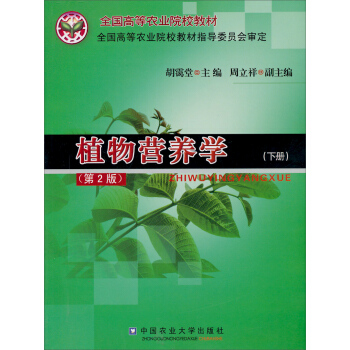


![蛋白质纯化指南(原书第2版) [Guide to Protein Purification] pdf epub mobi 电子书 下载](https://pic.tinynews.org/11304575/5398fdb9N6268ec4e.jpg)

![中国国家地理少儿百科 人体 [Concise Encyclopedia Of The Human Body] pdf epub mobi 电子书 下载](https://pic.tinynews.org/11886686/56f24e25N819ebb66.jpg)
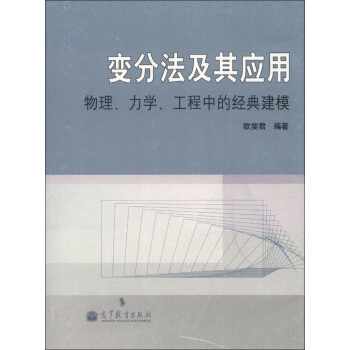
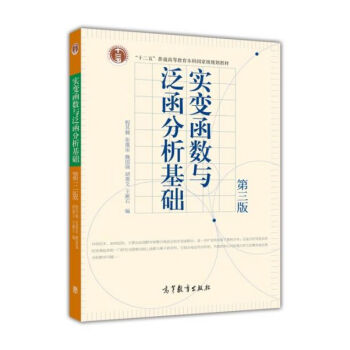

![Springer大学数学图书:随机过程基础(影印版) [Basic Stochastic Processes] pdf epub mobi 电子书 下载](https://pic.tinynews.org/10080426/0b78d0b0-9514-445a-874e-517d608544ff.jpg)
![剑桥物理公式手册 [The Cambridge Handbook of Physics Formulas] pdf epub mobi 电子书 下载](https://pic.tinynews.org/10762450/8a6437a0-3c21-48b5-8bef-510d77a986b3.jpg)

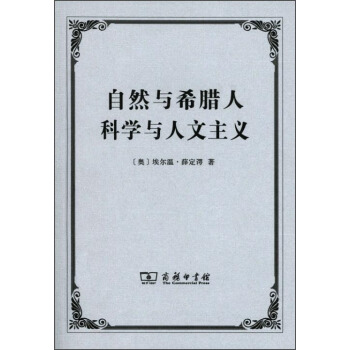
![救荒本草译注 [Translation and Annotation of Jiuhuang Bencao or Treatise on Wild Food Plants Used for Saving Famine] pdf epub mobi 电子书 下载](https://pic.tinynews.org/11823731/56c593ebN7a6a7196.jpg)
![进化动力学:探索生命的方程 [Evolutionary Dynamics Exploring The Equations Of Life] pdf epub mobi 电子书 下载](https://pic.tinynews.org/10053034/6fb0367c-865d-4b85-b5f4-c6dcbe7017b0.jpg)
